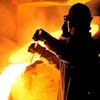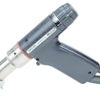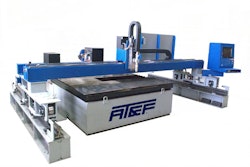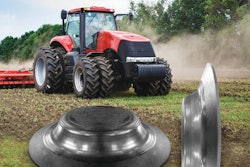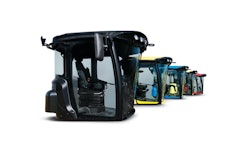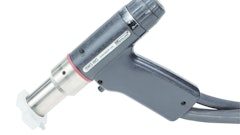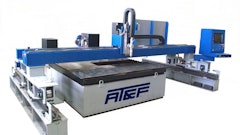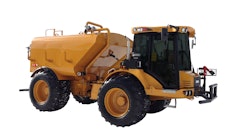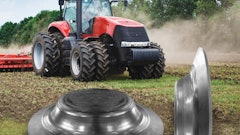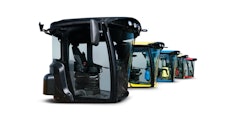The influence of the additive manufacturing industry is starting to take shape with heavy-duty vehicle applications. While 3D printing has been around for several decades, its most recent role has been for rapid prototyping to test a part’s overall shape, design and size. However, as material availability and printer capabilities expand, additive manufacturing is quickly becoming a manufacturing opportunity for actual production parts, and remanufacturing and replacement part services.
Additive manufacturing presents several opportunities, as well as new challenges for OEMs to consider. Existing products can now be reevaluated for new design opportunities that could otherwise not be realized using traditional fabrication processes. Engineers can design new parts with a freedom of creativity not often exercised (along with a new set of design rules to follow).
In December of 2015, Caterpillar Inc. opened its own Additive Manufacturing Factory in Mossville, IL. The factory, according to a release from Caterpillar, represented the company’s adaptation to changing manufacturing environments. The factory houses commercial and high-end prototype 3D printers to not only serve its customers, but to also increase the efficiency of its internal operations and conduct exploratory research and development with the latest technology.
Just three short months later, Caterpillar celebrated the grand opening of the full suite of three innovation spaces, including the Additive Manufacturing Factory—the Caterpillar 3D Printing & Innovation Accelerator. “Our 3D printing future is exciting — from castings to parts to other larger possibilities," said Caterpillar Chairman and CEO Doug Oberhelman in a statement during the opening. The other two areas include the Cat MicroFoundry for rapid creation of low-volume castings using sand 3D printing technology, and the Innovation Accelerator where engineers and team members are encouraged to use their imaginations to dream up the next great innovation and make it a physical reality.
Reimagine existing processes
The freedom of 3D printing does come with a learning curve, especially for seasoned designers that have been designing for manufacturing processes like casting for years, and now can rethink how a part functions without a fabrication constraint.
With printing, a unique design consideration would be adding support structures to stabilize the design as it is being printed. Plastic printed materials can use a dissolvable substrate for its supports, while metal printing requires the supports to be removed by a tool of some kind.
Gina McGee is a design engineer in the NPI Combustion Mechanical Design group at Solar Turbines Inc., a Caterpillar company. In her development group, the focus is on designing parts for the future. “Many people in my group have come from manufacturing and are very familiar with the lathe and mill, CNC 5 axis machines and other conventional fabrication methods. But, when we’re 3D printing parts, you now have to design for how the part is going to function, not how it’s going to be fabricated.”
Using conventional machining, a designer must always keep in mind how the part is going to be made, what tools will be used, what type of drill points, what type of machine and the impact on the design. But, with 3D printing, a designer can think beyond fabrication constraints. “One of the last considerations in a 3D printed metal part’s design will be the tool that has to remove any support structure that you might have had to use to build the part,” says McGee. “But, that also means a designer has to think of support structure minimizing for a 3D printed design to reduce the amount of tooling time.
Surface finishing is also an area of reconsideration for a designer. With a conventional part, when the material is being cut away, the surface finish process can be happening during the machining process like tumbling. For 3D printing, a part’s internal passages can be more complex than a conventionally fabricated design, but those internal passages may be inaccessible for smoothing or finishing tools. “You might have to hone it with a slurry to smooth out any roughness in the passages, for example, while with conventional tooling, you probably would have machined it to a standard surface finish,” says McGee.
“I recently took an informal poll of my team,” she recalls. “I asked them, ‘If we could build your part with a 3D printer, would it look like it does now?’ And they said, ‘No, the reason the part looks the way it does is because we needed access to certain features for tooling and finishing. If we can design for function, our parts wouldn’t look like this.’”
“It sparks the imagination and allows you to think about things like you’ve never been able to before,” says McGee. “It’s really been a reemergence of innovation.”
Designing from scratch for 3D printing
Kristine Timmons, an engineering project team leader at Caterpillar Inc. was never bound by traditional manufacturing and design techniques. As a test engineer, her job was to try and validate or break a design, as well as suggest improvements. “Because I was never involved with traditional manufacturing and design techniques, my transition to additive manufacturing three years ago wasn’t as difficult as it was for design engineers that had to relearn how to approach system design.”
Timmons now leads a team of engineers from several different business units including metallurgy, printing, engine performance, and simulation. A recent project was centered around solving a problem with an engine component’s durability. “The part was only living for 8,000 hours and the goal was 20,000 hours. With the materials available to us and conventional manufacturing, we could make tiny improvements to the existing design, but there was no way we were ever going to reach the target life expectation for the part.”
Timmons gathered people form seven different business units within Caterpillar, plus two outside consultants, to brainstorm solutions. “I told them to throw conventional knowledge out the window and to assume that our Additive Manufacturing group could print anything,” she says. In the end, the group of 20 individuals came up with 45 different design concepts and, after comparative analysis through simulation tests, agreed upon three designs to print and test in the engine.
“We didn’t try to adapt a design to 3D print. We set out to create a whole new design. In the end, we were able to improve the engine’s performance and improve the life of the component to meet the 20,000-hour goal.”
Limitations and opportunities
The two major hurdles for additive manufacturing in heavy-duty equipment applications is the limited size of the printer and the materials available. Metals and plastics have been used in 3D printing for some time, and both material groups offer different benefits and restrictions for their use.
High temperature alloys, for example, have been available for 3D printing for only a few years, but it cannot be assumed that the material’s properties and performance will be the same as the raw amino alloys. A tensile test and fatigue test of the 3D printed product must be conducted to ensure the performance requirements are still being met.
Printing metal can also be a slow process, which is why it doesn’t always make sense to modify a design and 3D print it.
Conversely, the amount of time that can be saved printing multiple iterations of a part is significant. “If you design for casting, the gating, draft angles and tooling can take a long time, so you don’t change the design very often,” explains McGee. “But, with 3D printing, you can iterate much more quickly between concepts and have them built within weeks as opposed to months. Maybe the iterations are just different prototype versions of a component that will eventually be cast if possible, but it shortens the time between iterations and designs. Since I work in development, that’s where I see a big advantage.”
Another opportunity with redesigned or new product designs for 3D printing is overall part simplification. A part that was traditionally made up of 10 different pieces could be reimagined in only two pieces, or perhaps even as a single unit. A reduction of parts means a reduction in joints that can be points of weakness or leakage.
Simplification of a part’s design is also where cost savings can be found. Timmons’ group will soon be testing a design that can reduce the customer’s owning and operating costs by 5% and improve the durability of the component three fold. “We work on electric power engines, so 85% of the owning and operating costs are made up of the fuel costs alone, which is why improving the engine efficiency has such a big impact.”
In the end, additive manufacturing is a growing industry for heavy-equipment manufacturers to explore, with seemingly endless potential as printer technology continues to advance and material availability expands. More complex and optimized designs can be considered for higher system and machine performance, as well as potential time and cost savings during the design and manufacturing phase.
That’s not to say that this is the beginning of the end for traditional fabrication processes, especially with the size constraints of current 3D printers compared to the massive size of heavy-duty equipment components. “3D printing can’t do everything, but it can do a lot,” says McGee.

